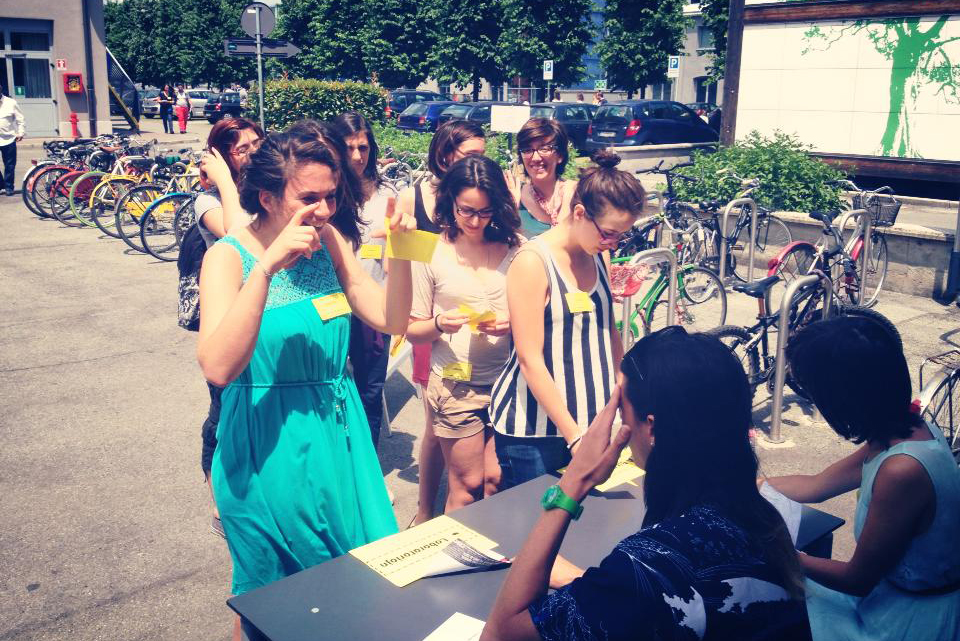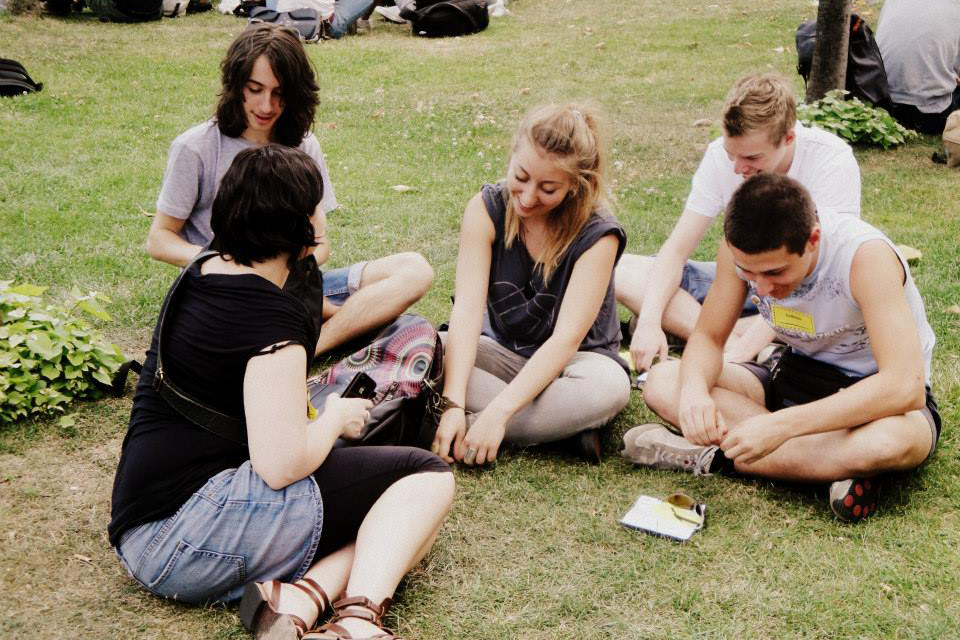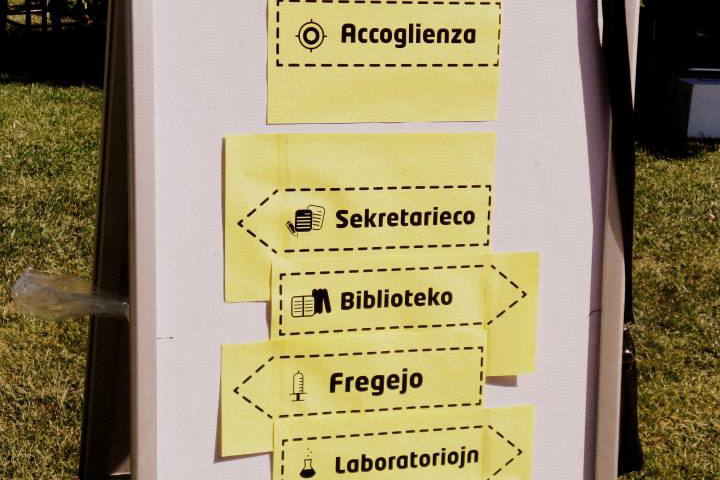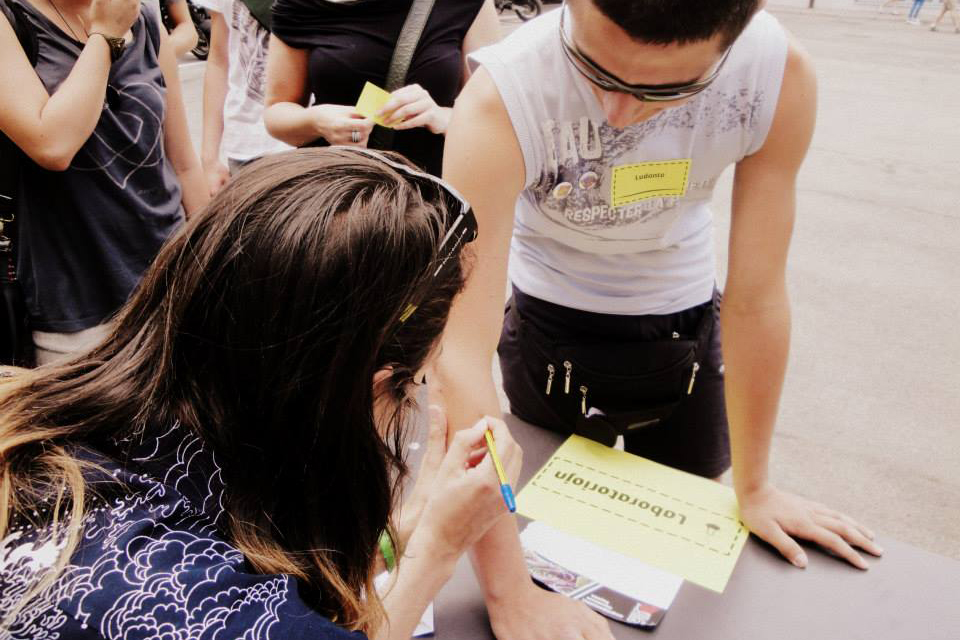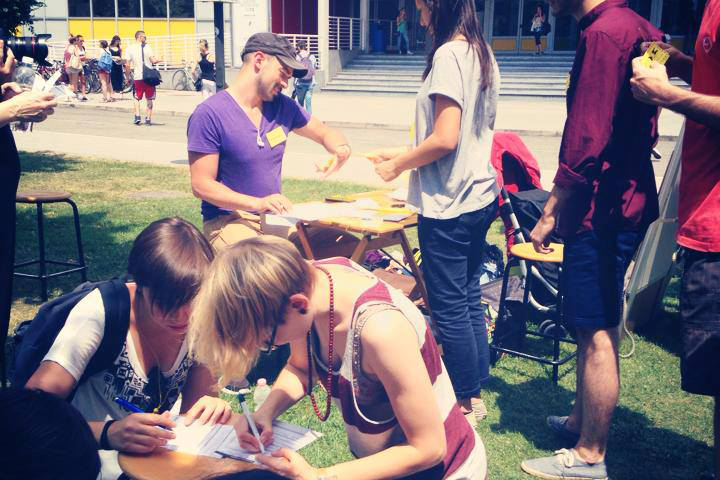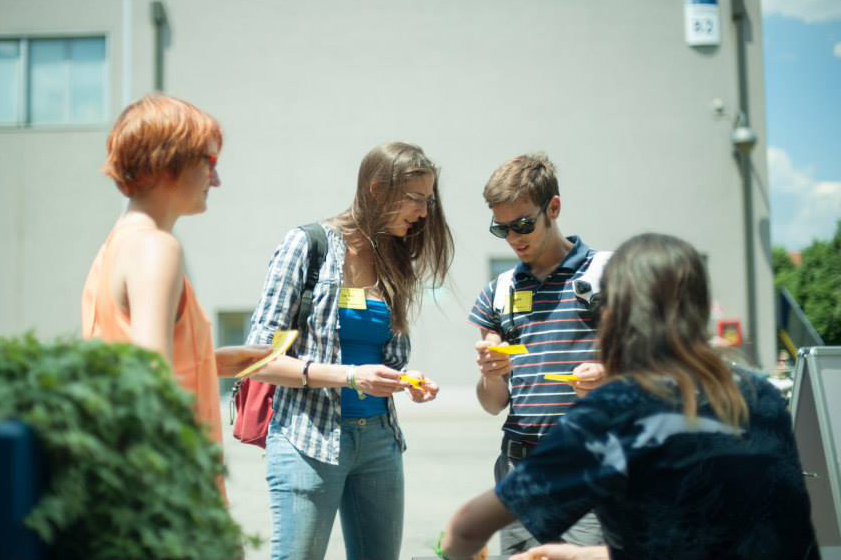A HOSTILE WORLD
A Hostile World
A pervasive Urban Game to sensitize and
foster a cross-cultural reflection
Promoters
Politecnico di Milano – Design Department
IMAGIS research group (M. Bertolo, assistant professor, I. Mariani, PhD student)
Keywords
meaningful experience | urban game | frame of reference | pattern of events | intercultural tension
Website
A Hostile World
Context
Short description about the research context. Problems, urgencies and needs the project deals with or discuss about, can be included.
The contemporary western cities are hybrid and multifaceted realities, where people with sometimes very different culture live side by side.
A situation that requires our cities to have a fluid and dynamic nature, making them able to change and transform as needed.
Our cities are places full of urgencies and opportunities, and – especially through the designer lens – they are actually remarkable spaces of possibilities. In the city we may design, aware of the many issues involved and responsive toward a situation less tense and less problematic.
The city and its inhabitants may be seen as complex system very interesting for the research on the areas of Communication and Game Design, toward a design methodology able to consider the interaction’s dimensions and the experience that may arise through a “well-done” ludic artifact. “Welldone” because of the design framework: theoretical research, cases analysis, iterative design protocol (prototyping, test, changes). The game may, in fact, foster communication and socio-cultural innovation bringing the citizens to tolook at the urban space as a place of diversity, meetings and exchanges. The international panorama has seen the ludic approach emerge as a practice able to have a high social and communicative impact.
In order to deal with important challenges and serious issues, the game often adopts conceptual simplifications and aims to involve players in meaningful experiences that help to understand particular issues and matters, sensitizing and persuading players to reconsider positions, preconceptions and ideas.
Concept
A very important aspect of our research is the aim to imagine, design and create games that are able to improve people’s lives.
A Hostile World is a persuasive game designed to take place in urban context with a high level of multiethnic presence: a feature that is more and more frequent in contemporary megalopolis. It arises from the assumption that the play activity may lead players to go through meaningful play experiences. Especially by playing in the city, players can interact with the context and get phisically into the experience. A deeper understanding is due to the fact of directly and really live some situations, getting in touch with other habits and uses.
The game is addressed to ordinary native citizens who are plunged into a “parallel fictional world” (a sort of alternative reality) where they can realize how complex and demanding it is to deal with gestures and tasks of everyday life in a foreign context. Trusting them to live a destabilizing experience the project drives at increasing the sensitivity, understanding and empathy towards foreigners: it aims at soothing the existing multicultural tensions, and relaxing the intercultural tensions that so often are exacerbated by the reluctance to put ourselves in the shoes of others.
Our aim is to make each player aware of a topic of considerable and high social interest, by creating urban ludic experiences that help to generate a sense of comprehension, due to the identification with some of the issues felt by cultural, ethnic and racial minorities. The goal is to make people live the experience of being alienated foreigners in a foreign land.
In the light of these considerations, we chose to develop the game and its elements in a foreign language: Esperanto, a language that belongs to humanity and not to a specific population. Therefore, Actors speak a language unknown to the players, the signs and the game elements use a foreign language.
Strategy
The immersion into the ludic reality proposed by the game system causes the player to detach from his usual frames of references and momentarily adopt other frames (Sclavi, 2003).
The game is based on quests recreating situations of very simple everyday-life needs; each player may choose to brave one or more quests, moving inside a modular structure.
Game sessions may change in the number and quality of quests adapting to different cities, contexts and targets.
Activities
With the cooperation of a multidisciplinary and interdisciplinary group of researchers, we organized different game sessions, during which we studied both the players’ behaviors and the experience they lived.
This data were collected with the help of scholars/researchers from the Sociology, Education, Psychology and Design fields, according to a hermeneutic approach supported by the filling of evaluation questionnaires on the game and the experience. Moreover a deeper analysis was possible through observation and ethnographic interviews.
Development
The project is actually active and performed, in different context and places: from the university field to the urban fabric. Until now it was played in a number of places in Italy, but we are arranging and organizing to expand its horizon at least to the european panorama: we are in contact with two different realities in Germany and Austria interested in setting the game in their places.
Results
Each game session is followed by a data collection through surveys, questionnaires and interviews.
The total amount of data collected have demonstrated the validity of our design assumptions: players testified the experience as intense, deep, often characterized by elements of great unpleasantness, and almost paradoxically it was perceived in a positive way.
Our players described the experience as destabilizing: they felt incapable, often powerless and frustrated. Exactly the feeling of being out of their element generate the awareness of what it means to be different, to be foreigners in a hostile world.
The achieved result is clear and remarkable: a large amount of our players then brought the memory of this feeling in their daily life outside the game. This project has thus demonstrated its ability to stimulate a critical reflection that could lead to reconsider personal views and habits, to persuasion. As designers we observe and tested how the gaming experience once again can help to develop an openness to change.
Tools
Within the project it is possible to identify two main kinds of tools, related to its two main dimensions: the project system tools and the game system ones.
• Type of tool: prints, video, pictures, digital drawing, icons
• Functions:
– prints, digital drawings, icons: internal communication between game and players; representation of gameplay flows and collected data.
– video, pictures: analysis, records
• Origin: internal to the research group
• Target/audience: external to the research group: scientific community, institutions and organizations, citizens.
Bibliography
Essays and book chapters:
• Mariani, I., “Un Mondo Ostile”, in Bertolo, M., Mariani, I. (2014), Game Design. Gioco e giocare tra teoria e progetto, Pearson, Milano, p. 83
• Bertolo, M., Mariani, I. (2014, in press), “A Hostile World. A pervasive urban game to sensitise and foster a cross-cultural reflection”, in D. Ruggiero, Cases on the Societal Effects of Persuasive Games, Hershey: IGI Global.
• Bertolo, M., Mariani, I. (2013), “Meaningful play: learning, best practices, reflections through games”, in K. Mitgutsch et al Context Matters! Exploring and Reframing Games in Context.
Proceedings of the Vienna Games Conference 2013, Vienna: New Academic Press.
• Ierardi, L., (2013), “A Hostile World”, in K. Mitgutsch et al Context Matters! Exploring and Reframing Games in Context. Proceedings of the Vienna Games Conference 2013, Vienna: New Academic Press.

